Stephen Benskin
Member
Did H&D title all their graphs as "Negative Material B" and have labels "first excellent prints" and "just acceptable prints"? No. All I'm doing is pointing out the reference material. My god, give it a break.

Looking at the curve you uploaded more closely, "Negative Material B" is found on page 502 of the paper in the Journal of the Franklin Institute at the bottom half of the page. The same "Negative Material B" was used again on page 94 of Jones and Nelson's 1940 paper "A Study of Various Sensitometric Criteria of Negative Film Speeds." Personally, I like to go to the source material. It avoids some other authors interpretation of the materials.
All of the material in this thread is fascinating, although my understanding of it is far from complete.
As a visual learner, I would ask if it is possible to illustrate the principles reviewed with example photographs?
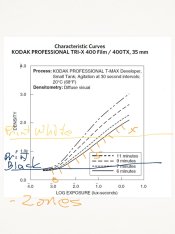
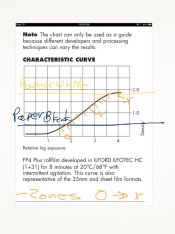
Not photos but see if this helps.
Remember these are not to scale.
Without a shoulder the separation on the negative is greater but it falls outside the print range, that detail is lost unless you burn them back in.
View attachment 67743
With shouldering and placement high on the curve the negative should straight print with better highlight detail.
View attachment 67744
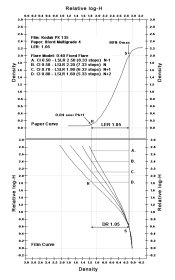
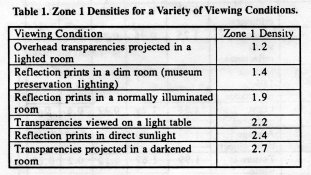
This might be a dumb question, but can I ask why?
One thing that could help with using less exposure is a highly compensating developer, which will bring compression (ie shouldering) further down the curve. Alternatively perhaps a shorter scale film.
But in the end I still think you're better off simply fixing this in printing. Flashing, or some low contrast burning etc.
Perhaps us both teaching a class would help. That might be an interesting GEH workshop. "The design of a photographic print system from film to paper"
Sounds like a self imposed limitation. The print is part of the photographic process and should be considered as part any option. Not only would print flashing be the easiest approach to obtain the desired effect, but it allows for greater exposure latitude with the negative. It's a win-win.
This might be a dumb question, but can I ask why?
...
For one thing, less flexibility (should you decide at some point on a different interpretation of the image) since you're reducing the amount of "information" in the negative.
Bill, according to the reproduction curve, an increase in the contrast for one part of the curve means a decrease in another.
Bill, Stephen has nailed the crux of the issue I'm facing.
Regardless of how we parse this once we pick a point on the paper to place say our main subject from the scene, then we are faced with a variety of challenges to get the rest of the subject matter we want on the paper.
Knowing it is a compromise, my question is basically asking "can placing subject matter in relation to the film's shoulder make my printing easier?"
Maybe a film that has, or can be manipulated into, a pronounced S curve with a relatively short straight line might fit my sensibility better than say a TMax that has 13 stops of straight line.
I don't know for sure but I'm beginning to suspect that this is one of the reasons that in practice I tend to prefer FP4+ over Delta 100 is the shape of the curve.
Bill, according to the reproduction curve, an increase in the contrast for one part of the curve means a decrease in another.
From a paper by Jones in The Photographic Journal based on his Hurter & Driffield Memorial lecture. "Since that time the contributions of the theory and practice of tone reproduction have been many and varied. Much of this material has been summarized and analyzed by Dr Mees in his book The Theory of the Photographic Process, published in 1942. It is the intention of the present paper to pick up the story at approximately the point where it was left by Dr Mees in that publication... The general over-all theory of photographic tone reproduction has been discussed many times before and it is felt, therefore, that a greater contribution to this problem can be made only by dealing with it in a rather detailed fashion. To do this, the solution of an elaborated tone reproduction diagram, illustrated by a quantitative example, will be carried through."
An example from the paper.
View attachment 67484
I realize that pegging to the highlights will typically create lots of shadow detail. This choice is simply a matter of picking my priorities. Getting the mid-tones right, especially faces, trumps everything else for me.
...there might be some value in using traditional primitive emulsions to explore this idea.

Stephen, Can your model project back from the "Preferred Reproduction" curve in the fourth quadrant... to an ideal film and flare curve in the first quadrant, then back out the flare to an ideal film?
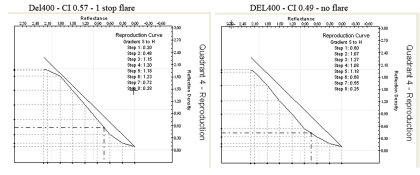
| Photrio.com contains affiliate links to products. We may receive a commission for purchases made through these links. To read our full affiliate disclosure statement please click Here. |
PHOTRIO PARTNERS EQUALLY FUNDING OUR COMMUNITY:  |